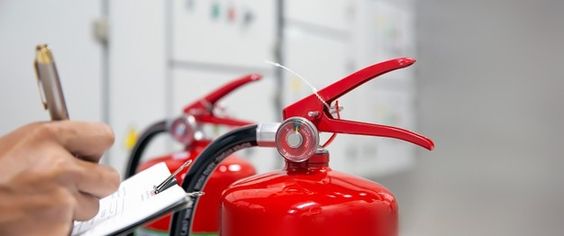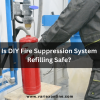![]()
Fire Immuniser
+91-7829629111
Email: info@variex.in
Varistor Technologies Pvt. Ltd.
Block-1, First Floor, Ardente Office One, Hoodi Circle, ITPL Main Road, Bengaluru, Karnataka 560048, IN
Fire Extinguisher Refilling Frequency
Fire Extinguisher Refilling Frequency
Introduction:
Fire extinguishers are essential safety devices found in homes, offices, schools, and other public buildings. They play a crucial role in preventing the spread of fires and ensuring the safety of individuals within a facility. However, to ensure their effectiveness, fire extinguishers require periodic refilling. In this article, we will explore the importance of fire extinguisher refilling frequency and why it is necessary to maintain their functionality.
The Importance of Regular Fire Extinguisher Refilling:
Fire extinguishers are designed to combat fires swiftly and effectively. However, like any other piece of equipment, their functionality can diminish over time. Regular refilling helps maintain their pressure and ensures that they are ready for immediate use in case of an emergency. It is crucial to remember that an empty or partially filled fire extinguisher can provide a false sense of security and prove to be useless in dire situations.
Factors Influencing Refilling Frequency:
Several factors contribute to the frequency with which fire extinguishers need to be refilled. The most significant factor is the type of extinguisher. Different extinguisher types, such as water, foam, dry powder, and CO2 extinguishers, have varying refilling requirements. Additionally, the size and weight of fire extinguishers impact their refilling frequency. Larger extinguishers tend to hold more extinguishing agent and may undergo less frequent refilling compared to smaller ones.
Moreover, the environment in which fire extinguishers are located can also play a role in determining how often they should be refilled. High-temperature environments, exposure to moisture or chemicals, and vibrations can impact the integrity of the extinguishing agent and the pressure within the canister. As a result, regular inspection and refilling may be necessary to ensure optimal functionality.
Established Guidelines and Regulations:
Fire safety regulations and guidelines help establish uniform procedures for fire extinguisher refilling frequency. These regulations are often mandated by local fire departments, government agencies, or industry-specific authorities. For instance, the National Fire Protection Association (NFPA) sets standards and guidelines for various fire safety procedures, including fire extinguisher refilling. Adhering to these regulations ensures that fire extinguishers are maintained in compliance with industry standards and are ready for use at all times.
Transitional phrase: With an understanding of the importance of fire extinguisher refilling and the factors influencing it, let us now delve into specific guidelines for various types of extinguishers.
Refilling Guidelines for Different Fire Extinguisher Types:
1. Water Extinguishers:
Water extinguishers are commonly used for class A fires involving materials such as paper, wood, or textiles. They require refilling every five years or after any discharge, even if it is only partial. Regular refilling ensures that the water remains uncontaminated and that the internal pressure is maintained, ensuring effective firefighting capabilities.
2. Foam Extinguishers:
Foam extinguishers are suitable for class A and B fires involving flammable liquids. They need refilling every five years, regardless of their use. The foam concentrate should be checked and replenished during refilling, and the pressure should be maintained according to the manufacturer's specifications.
3. Dry Powder Extinguishers:
Dry powder extinguishers are versatile and can be used on class A, B, C, and electrical fires. They require refilling at least once every five years. Additionally, these extinguishers should undergo thorough maintenance and inspection every year to ensure the powder is not compacted and that the pressure is within the required range.
4. CO2 Extinguishers:
CO2 extinguishers are effective against class B and electrical fires. They require refilling every ten years or after use, even if only partially discharged. These extinguishers should also undergo an annual maintenance check to ensure the horn, nozzle, valves, and other components are in excellent working condition.
Conclusion:
Regular refilling of fire extinguishers is crucial to ensure their effectiveness during emergencies. It is essential to understand the varying refilling requirements based on the type, size, and environment in which extinguishers are located. By following established guidelines and regulations, individuals and organizations can ensure that their fire extinguishers are always ready for use when they matter the most. Remember, fire safety should never be compromised, and staying proactive with fire extinguisher refilling is a step towards protecting lives and property.
Final Say
We at VariEx.in or Variexonline.com have mastered the art of designing, installing, inspecting, and fixing automatic sprinkler systems with the help of our in-house team, which is capable of delivering the fire sprinkler services you need, whether large or small and at affordable cost.
To schedule a fire sprinkler installation, or you think our services could benefit your commercial property, contact us online or give us a call at, 7829629111










